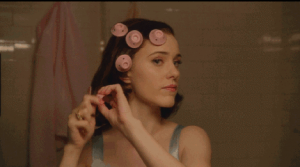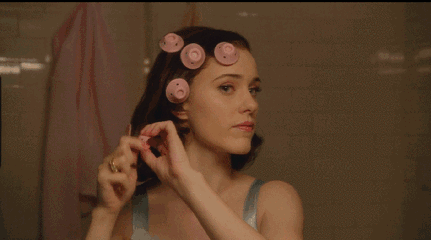
Most people are concerned about hair loss, dandruff, hair quality and other problems, and often ignore the “soil” hidden under their hair – the health of the scalp.
In fact, the scalp is more fragile and aging than the hair and even the skin of the face. Once there is a problem with the scalp, the hair is dry and irritable, acne appears on the scalp, and even the number of hair loss will increase significantly

Scalp, not just the “living soil” of hair
In all organs above and below the body, the priority protection level of the brain is at the forefront. As a “protective film” covering the skull of the brain, the importance of the scalp is self-evident, and its state is even related to cerebrovascular diseases.

The scalp is the extension of facial skin, and its physiological structure has its own characteristics: the epidermis of the scalp is thin, and the sebaceous glands and flora are rich.
Layer 1: skin layer
It is rich in hair follicles, sebaceous glands and sweat glands, and rich in blood. Hair follicles are like soil. They are not only the “window” for scalp breathing, but also affect hair growth. Once blocked, it will not only lead to hair loss, but also lead to hair follicle inflammation and other diseases.
In case of trauma, the skin layer will bleed a lot and heal quickly. Failure to stop bleeding in time may lead to hemorrhagic shock.
Second layer: superficial fascia layer
Located under the skin layer, it is composed of fat and thick and vertical fiber bundles, rich in blood vessels and nerves.
The third layer: cap aponeurosis layer
White tough membranous structure, connected to frontal muscle in the front and occipital muscle in the back. It is an important structure connecting various muscle tissues in the scalp.
Layer 4: loose connective tissue under aponeurosis
Located between the cap aponeurosis and periosteum, the texture is relatively loose, and many guide vessels are connected with the intracranial venous sinus. Therefore, it is also one of the ways to cause intracranial infection, which is called the “risk area” at the top of the skull.
Layer 5: Skull adventitia
Close to the skull surface, it is tough and can play a good role in protection and support.
Even with so many layers of tissue protection, the scalp is still fragile. The hair volume of normal people is about 100000. Affected by genetic, environmental, hormone and other factors, everyone’s hair volume is different. The root of many hair problems is actually the scalp.
Itching, pain, numbness, scalp “distress signal”
Healthy scalp, from the appearance, is not greasy and the surface is pink white, and there are no red spots on the scalp surface. The skin hidden under the hair will also have itching, pain, numbness and other symptoms.
Dandruff, itchy scalp
Most of them are fungal infections
Itchy scalp and white dandruff scattered on the shoulders embarrass many adults. In fact, this situation is mostly related to fungal infection, which is called Malassezia.

If dandruff suddenly increases but does not itch, it may be related to poor sleep.
Solution
In case of fungal infection, seek medical attention in time. Do not blindly use dandruff shampoo to prevent aggravating symptoms. Usually pay attention to avoid greasy food, drink less, and supplement B vitamins.
Breakouts
Seborrhea, folliculitis
When some people comb or scratch their hair, they may find some acne on their scalp, and some feel very painful. This may be folliculitis and seborrhea.
The scalp is rich in hair follicles and sebaceous glands, and it is easy to produce oil, which is called “seborrheic site” in medicine.
Seborrhea refers to the hypersecretion of sebaceous glands, mainly manifested as the scalp is fatty, greasy and shiny, and more desquamation.
If the openings of the hair follicles and sebaceous glands in these parts are blocked, it will cause local infection and inflammation, resulting in folliculitis, which is commonly known as acne, which will hurt when pressed.
Solution
Go to a professional department for treatment, identify the cause, and do not scratch.
Numbness
Cervical spondylopathy, cerebrovascular disease
The main cause of scalp numbness is insufficient blood supply to the brain scalp. The most common cause is cervical spondylosis, which can cause nerves and blood vessels to be compressed and blood cannot be transported to the head smoothly. As a result, the blood supply to the brain is insufficient, causing scalp numbness.
In addition to cervical spondylosis, cerebrovascular disease can also cause scalp numbness. If scalp numbness persists for a long time, further screening for cerebrovascular disease is recommended.
Solution
Scalp numbness caused by cervical spondylosis, it is recommended to comb your hair with a wooden comb before going to bed every night to promote blood circulation in the scalp and relieve the symptoms of scalp numbness.
Pain
Pulling by external force, sensitivity, trauma
Under normal circumstances, common causes of head pain come from muscle tissue, fascia tissue, bone, blood vessels, or nerve tissue. The pain is tingling or pulling.
Solution
Excluding external pulling factors such as hairpins or too tight braids, scalp pain may be caused by scalp cold and sensitivity, scalp trauma, congestion and blockage.
Usually, you can massage the scalp with your fingers. From front to back, use your fingertips to rub the scalp in circles, or tap the scalp lightly to promote the flow of blood on the head.
6 things to accelerate scalp aging
In daily life, people will encounter scalp problems more or less, and everyone does not need to be overly anxious. In addition to taking care of it gently, they should also avoid the following habits.
Always use the same shampoo
Anti-dandruff shampoos are more or less anti-fat and anti-bacterial, and the scalp will become resistant after a long time.
It is recommended that if a certain shampoo is used for a period of time, but the effect is not as good as before, you should immediately change to another brand or use it alternately. In addition, don’t apply shampoo directly on your head, you should make foam before applying it on your head.

Frequent use of hair dye
Phenylenediamine in hair dye is a sensitizer, which can cause some people to suffer from contact dermatitis, redness of the head and face, rash, swelling of the eyelids, etc. In severe cases, it can affect the skin of the whole body or even be fatal.
The scalp is the place with the largest and densest hair follicles. Direct contact with hair dyes may cause chemical toxins to enter the body. Long-term use may cause potential risks to the liver and kidneys.
It is best to remind the hairdresser before dyeing the hair to avoid direct contact between the dye and the scalp.
Scratching hard with nails
Nail cracks are easy to hide bacteria, if the scalp is scratched, bacteria will take advantage of the weakness and cause infection.
Scratching the scalp will only make the more itchy. The correct way to shampoo is to use your fingertips (finger belly) and slowly wash away in a circular motion.
The conditioner does not rinse off
Conditioner can only care for the hair. If it is not rinsed, the residual conditioner will be attached to the hair, making it easier to stain the hair with dust and clogging the hair follicles over time.
Apply the conditioner to the scalp sparingly, and apply it to a place 1~2 cm away from the roots of the hair.
Frequent perm
The syrup used for perm contains alkaline ingredients and oxidants. Frequent perm will damage the surface of the hair and lose its protection to the internal structure of the hair, causing the hair to become yellow, brittle, and lose its elasticity and luster.
It is advisable to have an interval of more than 3 months between two perms.

Washing hair with hot water.
Washing your hair with too hot water will not only hurt hair follicles and hair, but also take away the water and oil on the scalp surface, making the scalp skin drier.
People with oily hair should pay more attention. Overheated water will stimulate the scalp to secrete more oil and produce more dandruff.
It is suggested that the most suitable water temperature for shampoo is about 40 ℃.
Comments